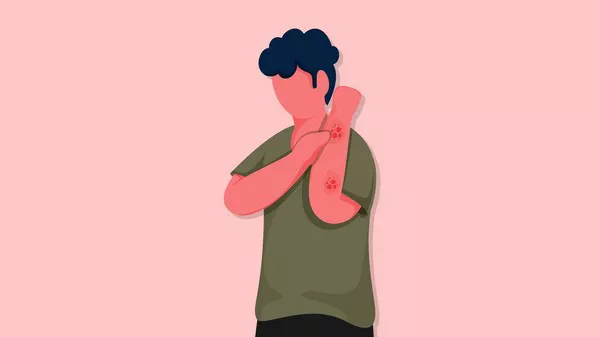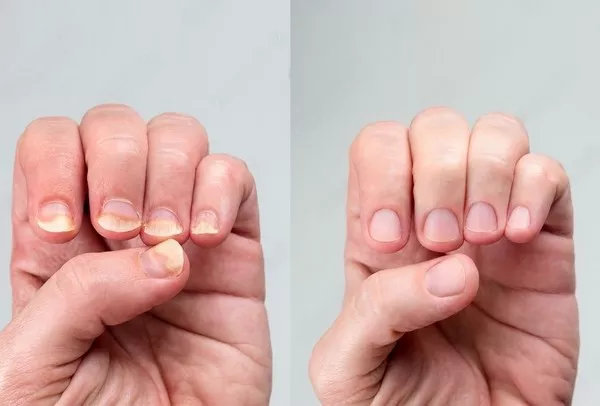Psoriatic arthritis (PsA) is a complex autoimmune condition that affects individuals with psoriasis, a skin disease characterized by red, scaly patches. One of the hallmark features of psoriatic arthritis is its potential to impact various joints in the body, leading to pain, stiffness, and inflammation. While it commonly affects peripheral joints like those in the hands and feet, psoriatic arthritis can also involve the spine, specifically causing lower back pain. Understanding the relationship between psoriatic arthritis and lower back pain is crucial for early diagnosis and effective management of this condition.
Psoriatic Arthritis and Spinal Involvement
Psoriatic arthritis is known to cause inflammation in the joints where ligaments and tendons attach to bones, a condition called enthesitis. This inflammation can occur not only in peripheral joints but also in the spine, particularly at the points where ligaments and tendons attach to the vertebrae. This type of involvement in the spine is termed spondylitis and can lead to a range of symptoms, including lower back pain, stiffness, and reduced mobility.
Symptoms of Psoriatic Arthritis in the Lower Back
Lower back pain due to psoriatic arthritis often presents differently from other types of back pain. The pain associated with PsA-related spondylitis tends to be:
1. Inflammatory in Nature: The pain is typically worse in the morning or after periods of inactivity and improves with movement or exercise.
2. Persistent and Progressive: Unlike acute back strains or injuries, PsA-related lower back pain tends to be chronic and may worsen over time if left untreated.
3. Accompanied by Stiffness: Patients often experience stiffness, especially in the morning or after prolonged periods of rest, which can improve throughout the day with activity.
4. Radiating to the Buttocks or Thighs: The pain may radiate from the lower back into the buttocks or thighs, mimicking sciatica-like symptoms.
5. Worsened by Prolonged Sitting or Standing: Individuals with PsA-related back pain often find that remaining stationary for extended periods exacerbates their symptoms.
Diagnosing Psoriatic Arthritis-Related Lower Back Pain
Diagnosing lower back pain related to psoriatic arthritis requires a comprehensive evaluation by a rheumatologist or a healthcare professional experienced in managing autoimmune conditions. Diagnosis typically involves:
- Medical History: Understanding the patient’s history of psoriasis and any family history of autoimmune diseases is crucial.
- Physical Examination: A thorough examination to assess joint tenderness, swelling, and range of motion, especially in the spine and peripheral joints.
- Imaging Studies: X-rays, MRI scans, or CT scans may be ordered to visualize the affected joints and assess for signs of inflammation or damage.
- Blood Tests: Tests for inflammatory markers like C-reactive protein (CRP) and rheumatoid factor (RF) can provide supportive evidence for diagnosis.
Treatment Approaches for Psoriatic Arthritis-Related Back Pain
Managing lower back pain caused by psoriatic arthritis requires a multifaceted approach tailored to each individual’s needs. Treatment goals aim to alleviate pain, reduce inflammation, preserve joint function, and prevent further progression of the disease. Common treatment strategies include:
1. Nonsteroidal Anti-Inflammatory Drugs (NSAIDs): These medications help reduce pain and inflammation and are often used as first-line therapy for mild to moderate symptoms.
2. Disease-Modifying Antirheumatic Drugs (DMARDs): Drugs like methotrexate, sulfasalazine, or biologics (e.g., TNF inhibitors) are used to suppress the immune system and slow disease progression.
3. Physical Therapy: Targeted exercises and stretches prescribed by a physical therapist can help improve flexibility, strengthen muscles, and reduce stiffness.
4. Biologic Therapies: These advanced medications target specific molecules involved in the inflammatory process and are effective for managing moderate to severe PsA.
5. Lifestyle Modifications: Maintaining a healthy weight, avoiding smoking, and adopting joint-friendly activities can help manage symptoms and improve overall well-being.
6. Surgical Intervention: In severe cases where joint damage is irreversible, surgical options such as joint replacement or joint fusion may be considered.
The Importance of Early Intervention
Early diagnosis and treatment of psoriatic arthritis-related lower back pain are critical for preventing irreversible joint damage and improving long-term outcomes. Delayed diagnosis or inadequate management can lead to progressive joint destruction, deformity, and significant disability. Therefore, individuals experiencing persistent lower back pain, especially those with a history of psoriasis, should seek medical evaluation promptly.
Conclusion
Psoriatic arthritis is a complex autoimmune condition that can affect various joints in the body, including the spine. Lower back pain associated with psoriatic arthritis is often chronic, inflammatory, and characterized by morning stiffness. Early recognition of symptoms and timely intervention are essential for effectively managing this condition and preserving joint function. If you suspect you have psoriatic arthritis or are experiencing persistent lower back pain, consult a healthcare professional experienced in rheumatology for a comprehensive evaluation and personalized treatment plan. Early intervention can make a significant difference in managing symptoms and improving quality of life for individuals living with psoriatic arthritis.
Related Topics:

























